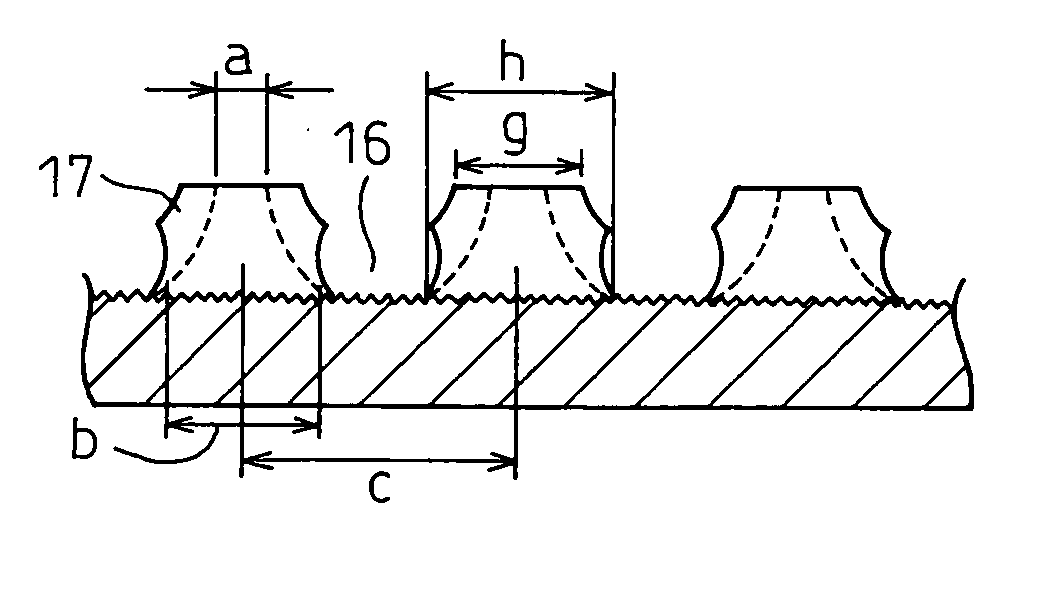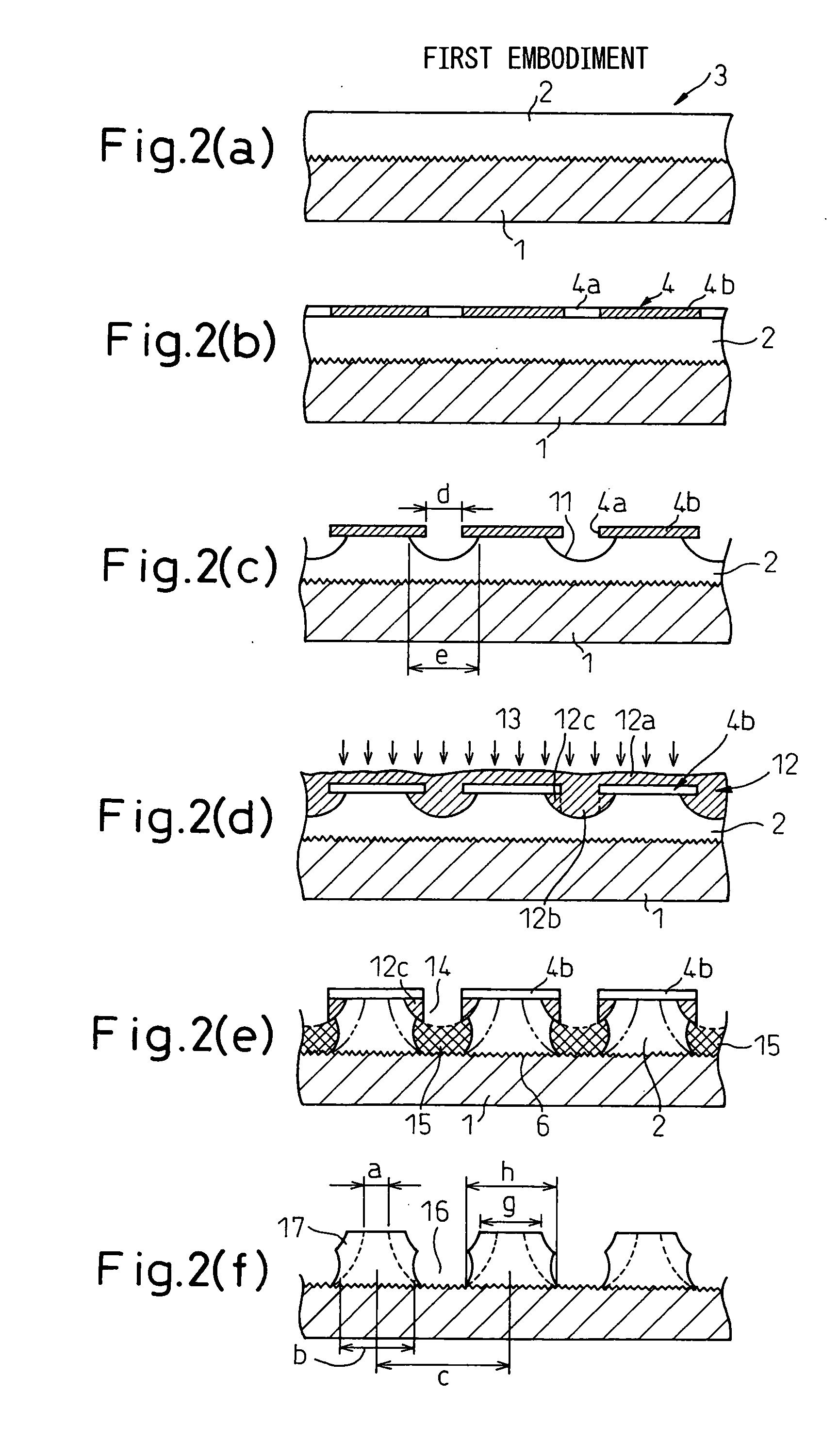Process for making circuit board or lead frame
a technology of lead frame and circuit board, which is applied in the direction of printed circuit manufacturing, lithography/patterning, patterning and lithography, etc., can solve the problems of difficult to secure a sufficient width and difficult to achieve a fine structur
- Summary
- Abstract
- Description
- Claims
- Application Information
AI Technical Summary
Benefits of technology
Problems solved by technology
Method used
Image
Examples
first embodiment
[0038] FIGS. 2(a) to 2(f) are sectional views showing the process of fabricating a circuit board using the subtractive method according to the invention.
[0039] In FIG. 2(a), a copper foil 2 is formed as a metal layer on a resin substrate 1 by a well-known method thereby to make up a substrate member 3. The resin substrate 1 is generally constituted of epoxy resin or glass epoxy resin.
[0040] Next, in FIG. 2(b), a dry film resist (DFR) having a light-blocking characteristic is formed as a first masking 4 on the upper surface of the copper foil 2, and exposed and developed by a well-known method thereby to form a resist pattern 4b.
[0041] Next, in FIG. 2(c), the etching solution is applied toward the first masking 4 formed of the openings 4a and the resist pattern 4b thereby to conduct the half etching. This half etching melts the peripheral area of the copper foil 2 under the etching solution passed portions 4a of the first masking 4. Thus, the half etching conditions (etching time, ...
second embodiment
[0051] First, as shown in FIG. 3(a), a thin second metal layer 20 is formed on the copper foil 2 of a substrate member 3 including a resin substrate 1 formed with a copper foil 2 constituting a first metal layer. The thin second metal layer 20 may be a silver plating as described later.
[0052] Next, as shown in FIG. 3(b), as in the first embodiment, a dry film resist (DFR) is formed as a first resist 4 on the upper surface of the second metal layer 20, and exposed and developed by a well-known method thereby to form a resist pattern 4b.
[0053] In FIG. 3(c), only the thin second metal layer 20 is selectively removed by the quick etching process through each opening 4a of the patterned first resist 4 formed on the upper surface of the second metal layer 20. As a result, only the portion of the second metal layer 20 corresponding to each opening 4a of the first resist 4 is removed. In the case where silver is used for the second metal layer 20, for example, the parting solution as desc...
fourth embodiment
[0085] FIGS. 9(a) to 9(f) are sectional views showing the fabrication process of a circuit board according to the invention using the subtractive method.
[0086]FIG. 9(a) shows a state in which a copper foil 102 is formed on a resin substrate 101 by a well-known method to make up a substrate member 103. The resin substrate 101 is generally formed of epoxy resin or glass-epoxy resin.
[0087] Next, in FIG. 9(b), a dry film resist (DFR) is formed as a first masking 104 on the upper surface of the copper foil, and exposed and developed by a well-known method thereby to form a resist pattern 104b.
[0088] Next, in FIG. 9(c), the etching solution is applied toward the first masking 104 of the resist pattern thereby to conduct the half etching. This half etching melts the peripheral area of the copper foil 102 under the etching solution passed portion 104a of the first masking 104. The half etching conditions (etching time, etc.) are adjusted so that the etched portion 111 of the copper foil 1...
PUM
 Login to View More
Login to View More Abstract
Description
Claims
Application Information
 Login to View More
Login to View More - R&D
- Intellectual Property
- Life Sciences
- Materials
- Tech Scout
- Unparalleled Data Quality
- Higher Quality Content
- 60% Fewer Hallucinations
Browse by: Latest US Patents, China's latest patents, Technical Efficacy Thesaurus, Application Domain, Technology Topic, Popular Technical Reports.
© 2025 PatSnap. All rights reserved.Legal|Privacy policy|Modern Slavery Act Transparency Statement|Sitemap|About US| Contact US: help@patsnap.com



